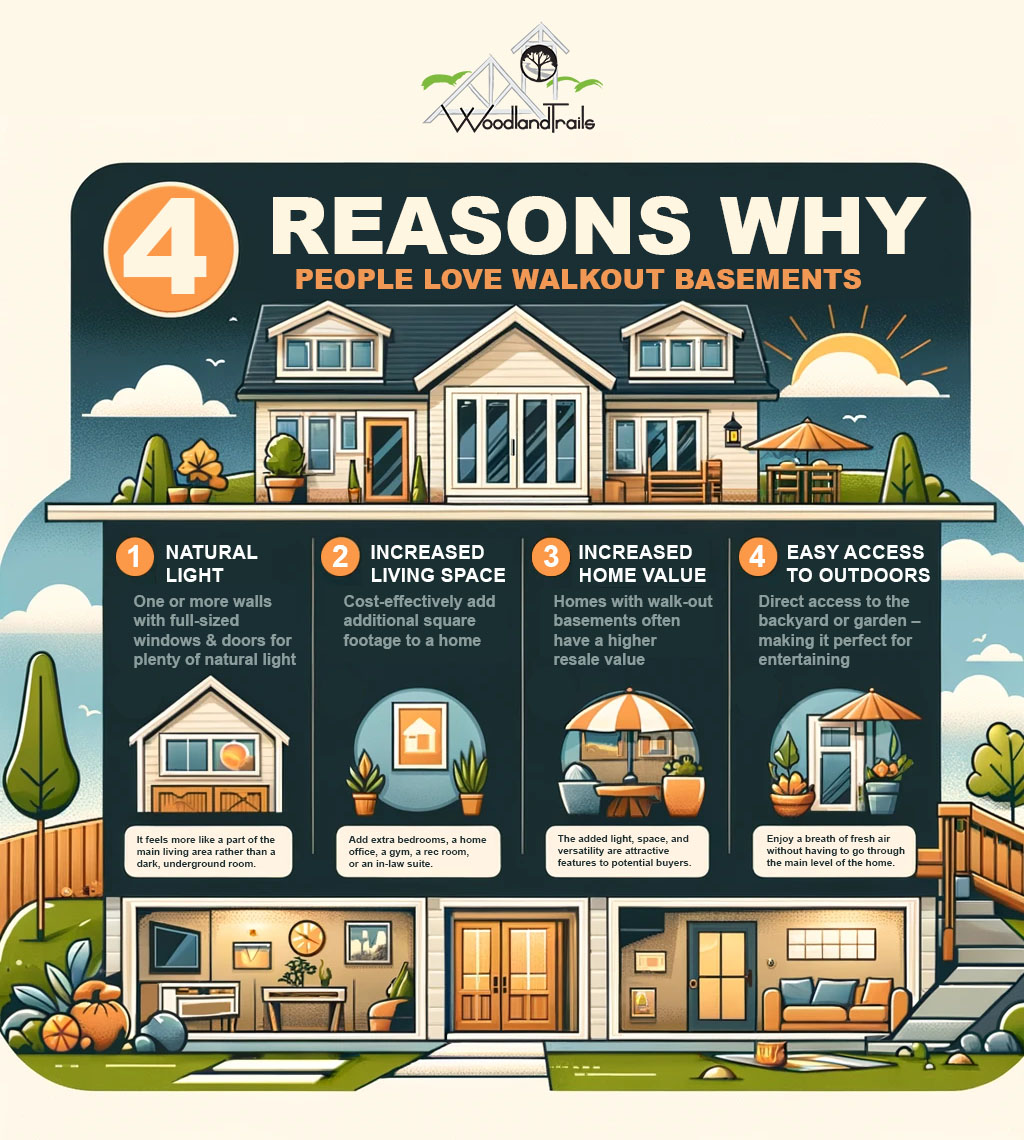
Walking Out on Tradition: The Rise of Walkout Basements and the Importance of Land Grading
In recent years, walkout basements have become increasingly popular among homeowners seeking to maximize their living space and connection to the outdoors. However, achieving the perfect walkout basement requires more than just digging into the ground.
The grading of the land plays a crucial role in the success and functionality of these lower-level living spaces. Let’s delve into the reasons behind the popularity of walkout basements and why proper land grading is essential for optimal results.
Why People Love Walkout Basements
The allure of walkout basements lies in their ability to offer increased natural light, seamless integration with outdoor living spaces, and additional usable square footage — all without the feeling of being in a traditional basement. These spaces often feature full-sized windows and doors that lead directly to the backyard or garden, effectively blurring the lines between indoor and outdoor environments. Moreover, having a walkout basement can make your home more valuable and attractive to buyers looking for something special and flexible in their living space.

The Convenience of Walkout Basements
According to Jim Riffe, the developer behind the Woodland Trails community renowned for its abundance of homes with walkout basements, the popularity of these spaces stems from the unique blend of functionality and value they offer to homeowners. Homeowners are drawn to walkout basements primarily for the convenience and accessibility they provide, eliminating the need to navigate stairs from the home’s interior to reach the basement. This direct access from the backyard not only enhances the usability of the space but also caters to the growing desire among homeowners to fully utilize their basements.
The Cost-effectiveness of Walkout Basements
Basements are relatively cost-effective areas to finish and transform into vibrant, functional spaces, such as expansive recreation rooms, home gyms, additional bedrooms, or home offices. The inherent appeal of walkout basements lies in their ability to turn what would otherwise be a dark, underground area into an attractive and livable environment, illuminated by natural light and seamlessly connected to the outdoors. This combination of practicality, affordability, and enhanced living quality underpins the widespread appeal of walkout basements in communities like Woodland Trails.
The Art of Integrating Design and Grading the Land
Designing walkout basements takes thoughtful planning. Proper window placement and exterior access are essential in maximizing natural light and ensuring easy transition to outdoor areas. Additionally, integrating the basement’s design with landscaping can enhance both functionality and aesthetics, creating a cohesive look and feel. But for a walkout basement to really work, the land has to slope the right way. This means managing water so it doesn’t get into the house and making sure the transition from inside to outside looks good and works well. Solving problems like uneven ground or poor soil takes some know-how and expertise.
Jim Riffe enjoys figuring out how to slope the land so everything works together – like not having a driveway that’s too steep, minimizing steps from the garage into the house, and making sure yards are not too steep but still drain well when it rains. It’s like putting together a big puzzle to make sure the basement is bright, the yard is useful, and water drains away properly. This work leads to great walkout basements that improve living areas and bring them closer to nature.
Factors Influencing Land Grading
Site-specific factors, including soil composition, topography, and local building regulations, significantly impact land grading decisions. A professional site assessment and soil testing are indispensable steps in identifying the appropriate grading strategy. Moreover, environmental and sustainable grading practices are increasingly important, aiming to minimize erosion and preserve the natural landscape. Through careful consideration of these factors, homeowners and builders can ensure that their walkout basements are both functional and environmentally responsible.
In the Woodland Trails community, a significant number of homes feature walkout basements, a testament to the thoughtful planning and expertise of the developer. Riffe has meticulously designed the topography of this neighborhood to accommodate these desirable architectural features. When implementing walkout basements on a large scale within the same community, the complexity of land grading intensifies. This approach typically necessitates positioning the roads at a higher elevation relative to the homes, ensuring a natural slope that facilitates efficient water runoff. Achieving the delicate balance between maintaining a manageable slope and ensuring effective drainage for all properties is a hallmark of Riffe’s skillful development strategy, highlighting his commitment to both aesthetic appeal and functional living spaces in the Woodland Trails community.
Collaboration between Architects, Builders, and Landscapers
Achieving an exceptional walkout basement is a collaborative effort that involves architects, builders, and landscapers. Talking and planning together from the start can help make sure the basement and the yard turn out just right.
As walkout basements continue to gain popularity for their versatility and connection to the outdoors, it’s essential to recognize the critical role that land grading plays in their success. By understanding the importance of proper grading and collaborating with experienced professionals, homeowners can achieve functional, beautiful, and enduring walkout basement spaces that enhance their quality of life and property value.

